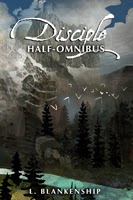- Missing comma
- Run-on sentences
- Comma splice
- Comma misuse
- Definite vs. Indefinite article use
This list was generated by their auto-proofreading software, so another grain of salt is in order. Still, there are some interesting points.
#1 and #4 -- in my opinion, commas can be argued about. They're a matter of personal style, to some degree. I view them as a pacing mechanism in a sentence and I use them to indicate a very slight pause in a thought or in dialogue. That's on top of their mechanical functions in separating out lists and parceling clauses. For example:
The corner store opened on time that morning, which was a first, and I bought a six-pack of beer.
Commas in that sentence enclose a clause which could drop out of the sentence without impacting its readability at all. "Which was a first" is an aside, an editorial comment, and when I read it I hear a slight pause as the narrator turns to look me in the eye and snark for a moment. If you drop the clause out...
The corner store opened on time that morning and I bought a six-pack of beer.
...you don't need a comma, but I'm not nit-picky enough to complain of someone put one before "and."
#2 and #3 are two manifestations of the same problem: badly built sentences. Of all the bad ways to build sentences, run-ons and comma splices seem the most obvious and clunky to me so either Grammarly's software can't reliably detect the rest or first drafts are messier than I thought.
That store never opens on time, the owner's out drunk every night and too hung-over to get up.
His beer selection is good though he gets that much right.
Both of those sentences are so easy to fix that I had some trouble writing them incorrectly. Are these really so common?
Which leaves #5: "a" and "an" vs. "the." This one is actually a good point because there's a power in the definite article "the." It assumes foreknowledge. Insinuates importance.
Conversely, "a/an" de-emphasizes. It can completely shift the meaning of the sentence.
These are very subtle, too, since they're tiny words and very common.
I've put text into Grammarly a few times and yes, it's much better than Word's auto-correct. It certainly has the impartiality that can be helpful when you've been staring at a story for too long.
Whether it's good enough to sift out the finer points of definite and indefinite articles... mmm, I'd have to try it out some more. Has anyone here used Grammarly? What was your impression?
He was the knight for the job.
He was a knight for a job.
I've put text into Grammarly a few times and yes, it's much better than Word's auto-correct. It certainly has the impartiality that can be helpful when you've been staring at a story for too long.
Whether it's good enough to sift out the finer points of definite and indefinite articles... mmm, I'd have to try it out some more. Has anyone here used Grammarly? What was your impression?



